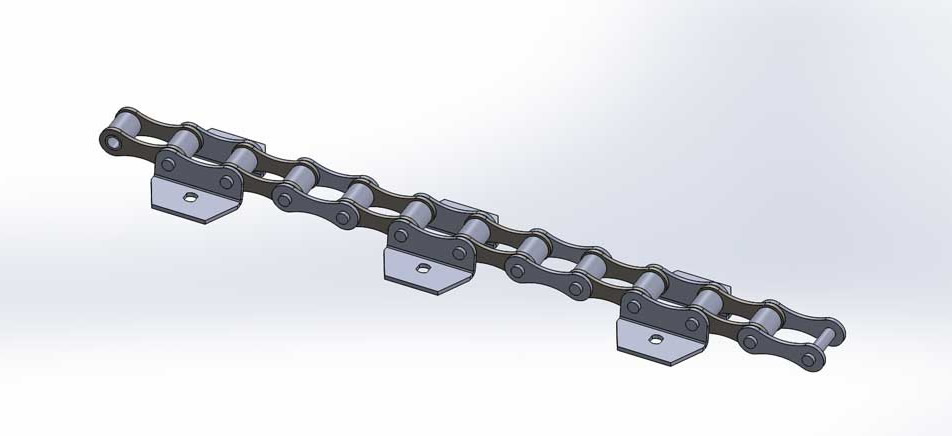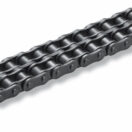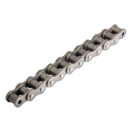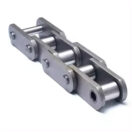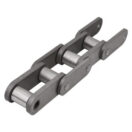What is Clayson Chain?
Clayson chain is a part that often plays an important role in automotive and industrial machinery. These chains are high durability chains designed specifically for heavy-duty applications. In this article, we will take a detailed look at what Clayson chain is, how it works and its importance in the industry.
- Description and Characteristics of Clayson Chain: Clayson chain is named after Clayson, an old British company that often manufactured agricultural machinery. These chains are ideal for applications that require high performance, especially in harsh conditions. Made from high-tension and friction-resistant materials, these chains offer long-lasting use.
- Working Principle of Clayson Chain: Clayson chain is used to transmit rotational motion between sprocket wheels. These chains fit perfectly to the sprocket wheels, allowing the machine to operate more efficiently. The design of the chain allows for high torque and power transmission, while at the same time minimizing energy loss.
- Advantages of Clayson Chain: In addition to its high performance, Clayson chains stand out with their durability and long life. Suitable for heavy-duty applications, these chains are also resistant to harsh environmental conditions. In addition, it reduces operational costs with low maintenance needs and offers an economical option for businesses.
Clayson chain is an indispensable solution for businesses looking for high performance and reliability in industrial applications. These chains ensure more efficient and long-lasting operation of machinery, especially in heavy-duty sectors. With high durability and low maintenance, Clayson chains continue to set industry standards by delivering high productivity even in harsh working conditions. Thanks to their superior properties, these chains are preferred by more and more industries and play an important role in improving the performance of machines.
What Does Clayson Chain Do?
Clayson chain is an important component that provides motion and power transmission in various machinery and equipment. These chains, which are widely used especially in agricultural, automotive and industrial machinery, attract attention with their strong and durable structure. The functionality of the Clayson chain is one of the main reasons why it is preferred in many sectors with its high efficiency and long-lasting use.
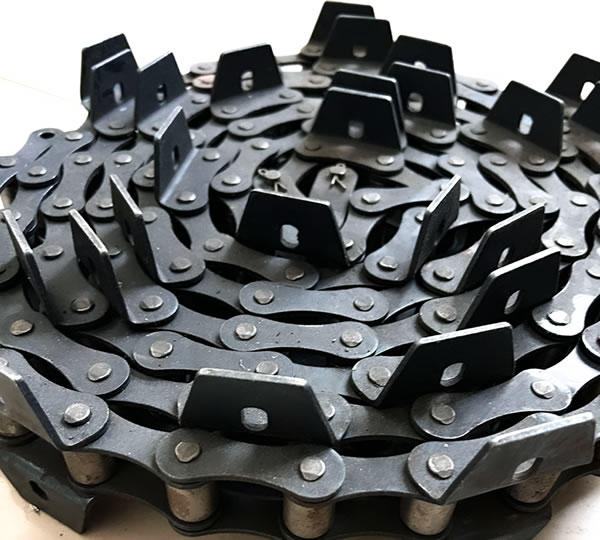
Applications of Clayson Chain
-Power Transmission: The Clayson chain transfers energy from the engine or other power source to other parts of the machine. These chains are particularly effective in applications requiring high torque.
- Motion Synchronization: The chain provides timing and speed synchronization between different parts of the machine. This feature is especially vital for agricultural and production machines that require precise operations.
- Durability and Reliability: Clayson chain is designed for heavy-duty conditions. Its high wear resistance ensures that the chain runs reliably for long periods of time, even in harsh conditions.
- Low Maintenance: These chains are known for their structure that does not require regular maintenance and offers long-lasting use. This feature helps to reduce operating costs.
Clayson chain is considered an indispensable component in a wide range of industrial applications requiring high performance and reliability. With its robust construction, high durability and low maintenance requirements, Clayson chains play a critical role in helping businesses increase their productivity and ensure operational continuity.
What Are the Types of Clayson Chains?
Clayson chain is available in different types for various industrial and agricultural applications. Each is designed to meet specific requirements and serves specific functions. Here are some commonly used types of Clayson chain:
1. Standard Chains:
This is the most basic type of Clayson chain and is ideal for general purpose uses. It comes in a variety of sizes and strength options, making them versatile and suitable for use on a variety of machine types.
2. Heavy Duty Chains:
These chains are specifically designed to operate under high load and extreme conditions. They are made of thicker and durable materials, thus ensuring long-lasting durability in heavy industrial and agricultural machinery.
3. Corrosion Resistant Chains:
Suitable for use in chemically aggressive environments or areas with high humidity, these chains prevent corrosion by a special coating or choice of material. This type is particularly popular in areas such as marine applications and food processing plants.
4. High Performance Chains:
These chains are optimized for applications that require continuous operation at high speeds. Thanks to advanced material compositions and special designs, high performance chains provide maximum efficiency and reduced energy loss.
5. Special Design Chains:
Some applications require special needs that cannot be met with standard chain solutions. Custom-designed chains are tailor-made to the needs of a specific machine or process. This ensures that the chain performs exactly the required function.
6. Heat Resistant Chains:
Designed for applications that need to operate in high temperature conditions, these chains are manufactured using heat resistant materials. This type is used in industries such as metalworking or ceramic production.
Clayson chains have a wide range of uses and different types of chains are specifically designed to meet a variety of industrial and agricultural requirements. Choosing the right type for your needs will increase the efficiency of your machine and reduce operating costs in the long run. Each type is optimized to perform a specific function and it is important to consider the specific conditions and requirements of your application when choosing.
What Are the Uses of Clayson Chain?
Clayson chain is an essential component used in many different industrial and agricultural applications due to its flexibility and robustness. These chains play critical roles in a variety of machines and equipment, offering high durability and reliable performance. Here are the main uses of Clayson chain:
1. Agricultural Equipment
Clayson chains are widely used in the agricultural sector. In agricultural vehicles such as tractors, harvesters and seeders, these chains are used to ensure constant and reliable power transmission, even under heavy loads. In processes such as tillage, mowing and harvesting, the chains support the efficient operation of the machines.
2. Automotive Industry
In the automotive industry, Clayson chains are used primarily in assembly lines and engine timing mechanisms. These chains help to precisely synchronize parts, improving the speed and accuracy of vehicle assembly processes.
3. Production Facilities
Conveyor systems used in production lines, especially during assembly and packaging processes, benefit from Clayson chains. These chains ensure a continuous and regular flow of material, increasing production efficiency and optimizing workflow.
4. Mining and Construction
In the mining and construction sectors, considered heavy industry, Clayson chains are used in stone crushing machines, conveyor belts and other heavy machinery. These chains are designed to withstand harsh working conditions and high load capacities.
5. Food Processing
In food processing plants, Clayson chains play an important role in the equipment used during the transportation, packaging and processing of products. Special chains made from corrosion-resistant materials are manufactured in accordance with food safety standards.
6. Paper and Pulp Industry
Paper production is a process that requires continuous and regular material handling. Clayson chains are used in the machines that transport and cut the paper reels, ensuring that the process runs smoothly and efficiently.
7. Energy Generation
Chain conveying systems used in power plants, particularly for transporting fuels such as biomass and coal, rely on Clayson chains. These chains are designed to withstand high energy requirements and perform in continuous operation.
Clayson chains are preferred in many different industries due to their high strength and adaptability. Each application benefits uniquely from the properties of the chain, which increases the versatility and value of Clayson chains in industrial applications. They have become an integral part of modern industrial and agricultural operations.
What Materials Are Clayson Chains Made of?
Clayson chain is manufactured from a variety of materials to ensure high durability and long-lasting performance. The clation chain material is selected according to the industry and application where the chain is used. Here are the main materials used in the production of Clayson chain:
- Steel:
Most Clayson chain is manufactured using various steel alloys to provide high strength and abrasion resistance. Carbon steel is one of the most commonly used materials and offers a good cost performance ratio. Alloy steels are preferred, especially in heavy-duty applications, because they have higher load capacities and better resistance to corrosive environments. - Stainless Steel:
For specialized applications such as food processing and chemical processing, chains made of stainless steel are used. This material provides corrosion resistance and is ideal in environments that require hygienic conditions. Stainless steel is also used in applications exposed to high temperatures and corrosive substances. - Nickel Alloy Steel:
Some Clayson chains are manufactured from nickel alloy steel, specifically for use in high temperature environments. This material offers excellent resistance to temperature changes and minimizes problems associated with thermal expansion. - Galvanized Steel:
For outdoor applications and use in humid environments, Clayson chains are sometimes made from galvanized steel. The galvanizing process adds a protective layer of zinc to the steel, providing extra protection against corrosion. - Thermoplastics and Composite Materials:
For applications looking for lighter weight solutions, Clayson chains made of thermoplastic or composite materials are also available. These materials are particularly suitable for situations requiring properties such as noise reduction and abrasion resistance. In addition, such materials have electrically insulating properties, making them preferred in electronics manufacturing processes.
The choice of material for Clayson chains depends on the specific requirements of the application in which they will be used. Each material offers unique advantages for a particular application and affects the overall performance of the chain. Characteristics such as chain durability, wear resistance and load capacity vary depending on the material selected. Therefore, choosing the right chain plays a critical role in the success of the application.
In Which Industries Is Clayson Chain Used?
Clayson chain is a preferred component in many industries due to its versatile and durable construction. These chains are designed for harsh working conditions and have a wide range of applications. Here are the main industries where Clayson chain is used:
- Agriculture
- Automotive
- Food Processing
- Production Assembly
- Construction and Mining
- Energy Production
- Packaging and Logistics
Thanks to its high strength and adaptability, Clayson chain has become an integral part of critical operations in a variety of industries. Each industry benefits from its unique advantages in different ways, making Clayson chains indispensable in industrial applications.
How Is Clayson Chain Installed?
Clayson chain assembly may differ depending on the machine or system the chain will be used on, but in general the basic steps are similar. Here is a step-by-step guide for Clayson chain assembly:
- Preparation:
Take safety precautions: Before starting the assembly process, make sure that all safety precautions have been taken. For electrical machinery, make sure that the power is switched off and that all moving parts are secured.
Tools and materials required: Prepare the tools and materials required for chain assembly (e.g. pliers, screwdriver, measuring tools).
Clean the machine: Clean the area where the chain and sprockets will be mounted. Dirt, oil and other foreign matter can prevent the chain from fitting correctly. - Measuring and Cutting the Chain:
Measure the length of the chain: Measure the chain length required by the machine. In most cases, the dimensions recommended by the machine manufacturer should be used.
Cut the chain to the appropriate size: If the chain does not come in a predetermined length, it must be cut to the required size. Using chain cutting tools, cut the chain to the correct length. - Assemble the Chain:
Place the chain: Place the chain on the sprockets. Both ends of the chain should sit neatly on the sprockets.
Adjust the chain tension: Make sure that the chain is not too loose or too tight. The correct tension of the chain is important for efficient power transmission and longer service life.
Install the connecting pins: Use connecting pins or master links to join the ends of the chain. These parts ensure that the chain functions as a whole. - Final Checks:
Check the assembly: Make sure that the chain fits properly and is fully compatible with the sprockets. Check for any jamming or abnormalities by manually testing the movement of the chain.
Test the machine: Repeat the safety checks and run the machine for a short time to make sure the chain is working correctly. This test ensures that any problems are recognized early.
Clayson chain assembly can vary depending on the type and characteristics of the machine, so specific instructions and specifications should always be taken into account. A careful and methodical approach during assembly ensures long life and efficient operation of the chain. In case of any doubt, it is best to contact a professional technician or the manufacturer.
How Is Clayson Chain Cleaned?
Clayson chain cleaning and maintenance prolongs the life of the chain and keeps the machines running efficiently. Cleaning the chain prevents dirt, dust and other foreign matter from accumulating, which reduces friction and wear and improves performance. Here is a step-by-step guide to cleaning the Clayson chain:
- Safety Precautions:
Turn off the machine: Make sure that the machine is completely switched off and disconnected from the mains before starting the cleaning process.
Wear the necessary protective equipment: Protect yourself by wearing personal protective equipment such as gloves and goggles. - Removing the Chain from the Machine (if necessary):
Remove the chain: If it is necessary to remove the chain from the machine for cleaning, follow the manufacturer’s instructions on how to remove the chain. This will allow you to clean the chain more effectively. - Cleaning Procedure:
Remove coarse dirt: Clean the chain of coarse dirt and debris using a brush or cloth.
Wash the chain: Wash the chain with a suitable cleaning solution. Usually, a cleaner with grease and oil dissolving properties is used. These cleaners help to dissolve the grease and dirt that has accumulated on the chain.
Do a thorough cleaning: Using an old toothbrush or a small brush, clean hard-to-reach areas of the chain, such as the sprocket gaps.
Rinse and dry: Rinse the chain thoroughly to remove the cleaning agent. Then dry it with a cloth or let it air dry. Make sure the chain is completely dry, as moisture can lead to rust. - Lubrication:
Lubricate the chain: After cleaning the chain, lubricate it with a suitable chain oil. This keeps the chain running smoothly and reduces wear. Lubrication minimizes friction by creating a protective layer between the moving parts of the chain. - Reassembling the Chain:
Reassemble the chain: After cleaning and lubrication has been completed, reassemble the chain to the machine. Make sure that the chain is correctly positioned and the tension is appropriate.
Regular cleaning of the Clayson chain is an important maintenance operation that improves the performance and efficiency of the machine. The frequency of cleaning can vary depending on the environment and operating conditions in which the chain is used. In severe operating conditions or dusty environments, the chain may need to be cleaned more frequently. If you have any questions about chain maintenance, it is best to contact the manufacturer or a specialized technician…

